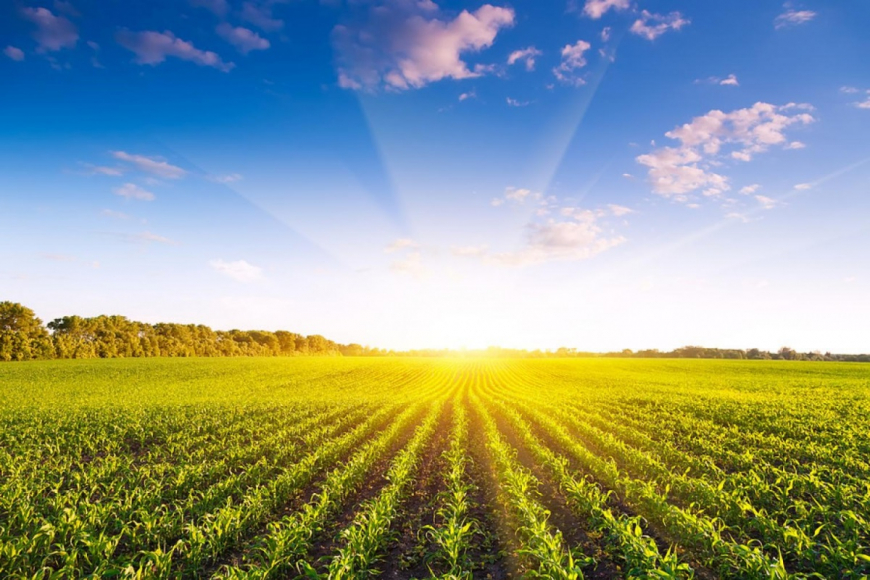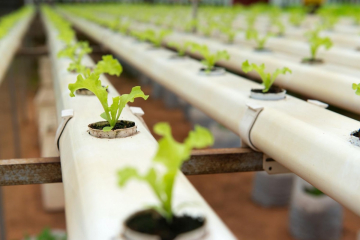At the recent Worldview 2017 conference focused on the future of food and beverage, I was excited to be able to present on the trends and challenges AgFunder News is seeing in the industry, and in particular to focus on some of the exciting new technologies emerging with the power to truly disrupt the status quo.
AgFunder News publishes daily, original news on the food and agriculture technology industry, including the latest funding news and analysis of trends in the sector. As such, we’re well placed to have a view towards the innovations coming down the pipeline, so here’s a look at what we’re seeing.
Why is Ag So Ripe for Disruption?
The agriculture industry is at a crucial turning point, being forced to grapple not only with increased production demands to feed a growing global population, but also having to find ways to deal with climate change and its associated environmental impacts and supply chain risks. On top of this, the industry has been left behind, technologically—according to McKinsey consulting group, it is the least digitized industry. The result? According to a major food company, “8 of 10 biggest food and ag companies could disappear in next decade,” painting a picture of the industry as a textbook example of a sector ripe for disruption.
There are already at least 4,000 early-stage technology companies investing in the space today, with many more yet to come. Investors are also looking to fill the void—right now, investment in agriculture represents 3% of venture capital funding, yet the industry represents 10% of global GDP. AgFunder is trying to fill this funding gap by introducing new investors to the space through our online investment platform as well as educate them through our media & research arm, including our daily news service AgFunderNews.
Tech in Action
So what exactly do all these potentially disruptive technologies do? Most loosely fall into three categories:
- Big data and analytics includes the likes of ground sensors, satellites, drones, machine learning, and robotics and automation, which together mostly add up to what could be called “precision agriculture.” These technologies can create prescriptive plans for farmers, build variable rate fertilizer maps to save cost and reduce environmental impact, help with water audits and managing water balance sheets, and support produce freshness measurement and tracking, among other things.
- Biotech and engineering innovations include shelf-life enhancement (every $1 spent reducing food waste actually saves $14), gene editing, which can help plants grow in harsh or inhospitable environments; and alternative non-animal proteins, all of which expand the scope of what is possible, where and how food can be grown, and how we feed the world’s population.
- Novel farming systems encompass indoor agriculture, which can mitigate farming risks, increase production per acre, reduce water and pesticide use, and lower CO2 and transportation; and insect farming, which uses less food and water than traditional protein production, among others.
Taken as a whole these technologies cover almost all aspects of food production, transport, and consumption, meaning that no part of “the way things have always been” is safe.
Good News, Bad News
As is so often the case in these kind of situations, the prospect of significant change presents both good news and bad news. The good news is that venture capital investment in the space is increasing exponentially, with many new investors becoming interested at the intersection between agriculture and technology. As part of this trend, new accelerators and incubators are popping up to support young startups and their disruptive ideas.
The bad news, however, is that it is yet early days. Large-scale change and adoption is very tough, especially in this industry, where behavior change (itself notoriously difficult) will be required not only on farms, but also throughout supply chains, and all the way to consumers. Incentives will be needed to encourage and speed adoption, perhaps in the form of policy changes, or insurance subsidies, and there will be significant education needs to bring farmers around the world up to speed on innovations and convince them of their value.
Sea Change
So how do we encourage adoption? What role do established agriculture companies have to play in the future? And which innovations will take hold and prove to be scalable? The answers remain to be seen, but there are steps companies can take to be proactive, and perhaps the most important thing to do is stay informed. (To that end, read more about our WorldView insights here, and see my presentation slides here.)
What do you think? What are you seeing around technology and innovation in agriculture? We’d love to hear from you!
You can email me at louisa@agfunder.com, or go to agfundernews.com for more daily insights on how this space is developing.
Want more news and insights like this?
Sign up for our monthly e-newsletter, The New Leaf. Our goal is to keep you updated, educated and even a bit entertained as it relates to all things EHS and sustainability.
Get e-NewsletterAbout the Author
 Louisa Burwood-Taylor
Louisa Burwood-Taylor
Chief Editor of AgFunderNews
Chief editor of AgFunderNews, Louisa has been a financial journalist for over 10 years. She has covered a variety of markets across Asia, Europe and the US for the Financial Times, Euromoney and Private Equity International. She turned her attention to agriculture over three years ago as the sector started to gather pace as an investment asset class.




